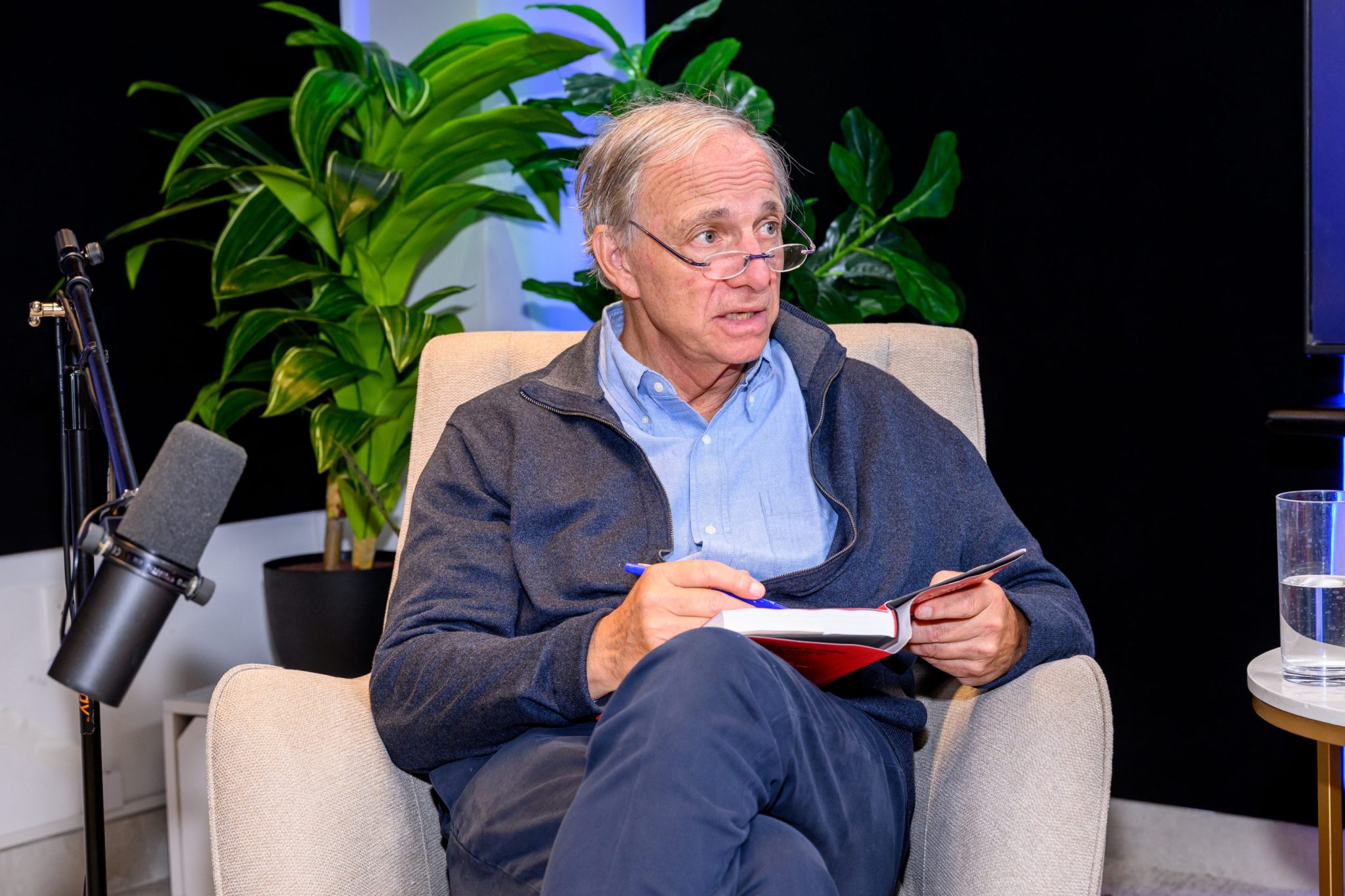
This may not be an era in which Americans are awash in physical currency fattening their wallets, but we are awash in cash parked inside accounts that have been generating attractive yields thanks to Federal Reserve interest rate hikes to combat inflation. There is a record amount of cash in money market funds, roughly $7.6 trillion, according to Crane Data.
But as the Federal Reserve prepares to cut rates for the first time in a year, maybe by as much as 50 basis points — a policy shift that will, over time, reduce the yields on risk-free cash-equivalent investments — market attention has shifted to whether that cash will be on the move. At the most extreme, Wall Street’s so-called “wall of cash” theory — which claims that all that cash on the move can create its own stock market rally — has been debunked about as many times as it has been offered.
At the very least, it is a significant moment of change in Federal Reserve rate policy. The latest jobs market data confirmed mounting fears of a labor market heading in the wrong direction and the need for the central bank to move sooner rather than later before unemployment spikes. Meanwhile, the latest inflation data, while far from an all-clear on pricing pressures throughout the economy, did not suggest the Fed will hold off on at least a 25 basis point rate cut next week.
The payrolls data “cinches the case for a rate cut,” said Investment Company Institute Chief Economist and lead ETF researcher Shelly Antoniewicz earlier this week on CNBC’s “ETF Edge.”
In line with most market experts and economists, she said the pace of those cuts will remain data-dependent as the Fed watches both the labor market and inflation, and manages its dual mandate of full employment and price stability. But she added on the podcast portion of ETF Edge that as the Fed starts to lower rates, the roughly $7 trillion “sitting in money market funds” will gradually flow into more risk-on assets, including stocks and bonds, as savings rates become less attractive.
To be sure, more mutual fund companies are going to be chasing those assets on the precipice of a huge decision from the Securities and Exchange Commission which could allow every asset management company to offer an ETF share class of their funds. Antoniewicz noted that there are 70 applications in with the SEC for exemptive relief and the ICI, the main mutual fund industry trade group, is working with hundreds of fund sponsors to be prepared to add an ETF share class if the SEC says “go.”
While all that may be true, Peter Crane, president and publisher of money fund research firm Crane Data, has heard it all before, at least when it comes to the Fed and money market funds, and he has a simple response: money fund assets just keep growing, and the only times in recent history when they’ve gone down as opposed to up is when rates are literally at zero during periods of economic calamity.
“The rates matter but much less than most people believe,” Crane said.
In fact, in the 52-year history of money market funds, assets have only gone down after the dotcom bust and financial crisis, periods where intense economic stress led to rock-bottom rates, a “bottom of the rate cycle nailed to zero,” he said.
If things get bad enough in the economy that the Fed has to cut more aggressively sooner rather than later, that’s not exactly a sign of a market where investors are likely to be overly aggressive with their own risk profile, either.
“Dream on Wall Street,” Crane said. “It makes for a good talking point, but the $7 trillion is not going anywhere but up.”
There has also been a shift over time in the usage of money market funds, with what was once mostly a retail investor phenomenon now majority institutional and corporate cash — roughly 60% of the market, according to Crane’s data. “They are not moving, no matter what,” he said. “They are not going into the stock market.”
It’s not that money fund researchers like Crane deny that lower rates matter, or that some of the money fund assets may indeed move to higher-risk, higher return areas of the market — he thinks that is maybe 10% of the $7 trillion-plus, though he adds there is no precise data to rely on for such an estimate.
But when you consider the roughly $20 trillion that Americans leave in bank deposits, basically giving their money to Wall Street to go off and make more money on while earning no money themselves, a 25 basis point cut in the current interest rate environment does not exactly make money funds a dead option.
“It’s more about how big is the rate differentially,” he said. “A quarter-point to cash investors, looking several years back to when rates were zero and they were used to getting nothing?” he asked.
While investors may get “re-sensitized” to yield, at what level will that occur? Currently, money fund investors are earning on average 4.3% annually.
Crane says even if rates move down to 3%, by no means assured since 100 basis points of Fed rate cuts is seen by many as aggressive barring a major downturn in the economy, much of the money will stay put, especially when you consider what banks are paying to hold cash, maybe at best 0.5%. “Bank deposits wildly underpay,” he said.
That’s why Crane believes it will take a repeat of Fed history for a significant amount of that cash to move. “Likely, if you go to zero there will be erosion in the base,” he said. The Fed did cut rates a year ago, before it paused due to fears about inflation, and money funds assets have only gone higher since. “If we go to 3.80%, 3.85%, is anyone going to care?” Crane said.
Additionally, even though the overall balance in the money fund market is huge, individual balances tend to be relatively small. If an investor has $5,000 in a money market fund and it is earning 1% or 2% more or less, Crane says there are better things to think about as far as making money. “You just spent more money thinking about the problem then you are earning. Nothing is worth doing for less than 1% or one hundred bucks,” he added.
And, at a time when the bond market has been volatile, there is more danger in fixed-income and in the treasuries market than investors had come to expect, making duration a more dicey proposition for investors.
Portfolio options as the Fed shifts to lower rates
One thing is certain: the money fund market won’t move next week in the immediate aftermath of a Fed decision to cut rates. Unlike treasury bills, money funds have a weighted maturity of 30 days, therefore assuming the Fed cuts next Wednesday at its FOMC meeting, treasuries start to go lower but money funds take a month to move fully lower because they are still owners of higher-yielding. older securities. And at least in the short-term, if the Fed unveils a jumbo cut, Crane would expect money market assets to go up for the same comparative reason.
“But over the long term, it is a negative,” he said. “Eventually, less interest is being generated compared to other investments.”
But the fact that the market keeps hitting record highs and money fund assets are also hitting record highs doesn’t suggest the game is one where whatever benefits stocks hurts money markets.

If you are among the investor set that has built up a more sizable balance than you necessarily need in cash-equivalent accounts, there are options, according to Todd Sohn, a technical strategist and ETF strategist for Strategas Asset Management. But he stressed that it all depends on risk tolerance, as well as tax factors.
“Once money market fund rates start flirting with the lower 3% area, your after-tax yield isn’t great,” Sohn said. But while that may not be ideal for the returns that can be generated, “perhaps you are risk averse and just want to keep it there,” he added.
For investors that do determine that a move out of money funds is warranted, the first step to consider is moving out on the treasury curve, for example, a treasury ETF with a duration of two to five years. Sohn concedes that at a time of greater fixed-income market volatility, it means investors are taking on more duration risk and more volatility, but no credit risk. “At least you’ll gain yield plus price appreciation,” he said.
To manage any surprises in the fixed-income market, investors can use what is called a “bond ladder” ETF.
“There’s a handful of ETFs out there that will ladder treasuries so you have exposure across the curve,” he said. “The balance of a ladder can keep volatility lower as opposed to adding too much duration,” he added, a factor that burned many investors in recent years.
Amid recent bond market volatility, many investors within the ETF market gravitated towards the shortest-term treasuries of all.
Investors could also consider adding to stock holdings, or entirely noncorrelated assets to either the stock or bond market, but Sohn warned that any investor who already has a diversified portfolio is unlikely to need more exposure to large-cap growth or tech, with the record market being propelled by those stocks, and the eight biggest tech stocks now representing close to 40% of the U.S. stock market.
“But perhaps you see holes in your equity sleeve,” Sohn said. “Assess your portfolio to see if you need small-, mid-cap or international exposures. There are a ton of low cost options for this,” he added.
You can watch this week’s full “ETF Edge” show for more on some of the ways investors are gaining new exposure to the stock market and income-generating investments through active ETFs and ETFs that employ equity options strategies.
Sign up for our weekly newsletter that goes beyond the livestream, offering a closer look at the trends and figures shaping the ETF market.
Disclaimer
Credit: Source link













